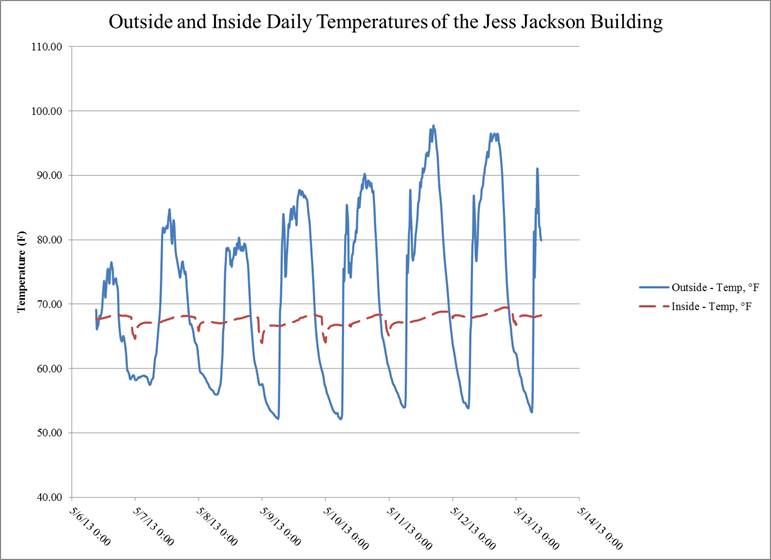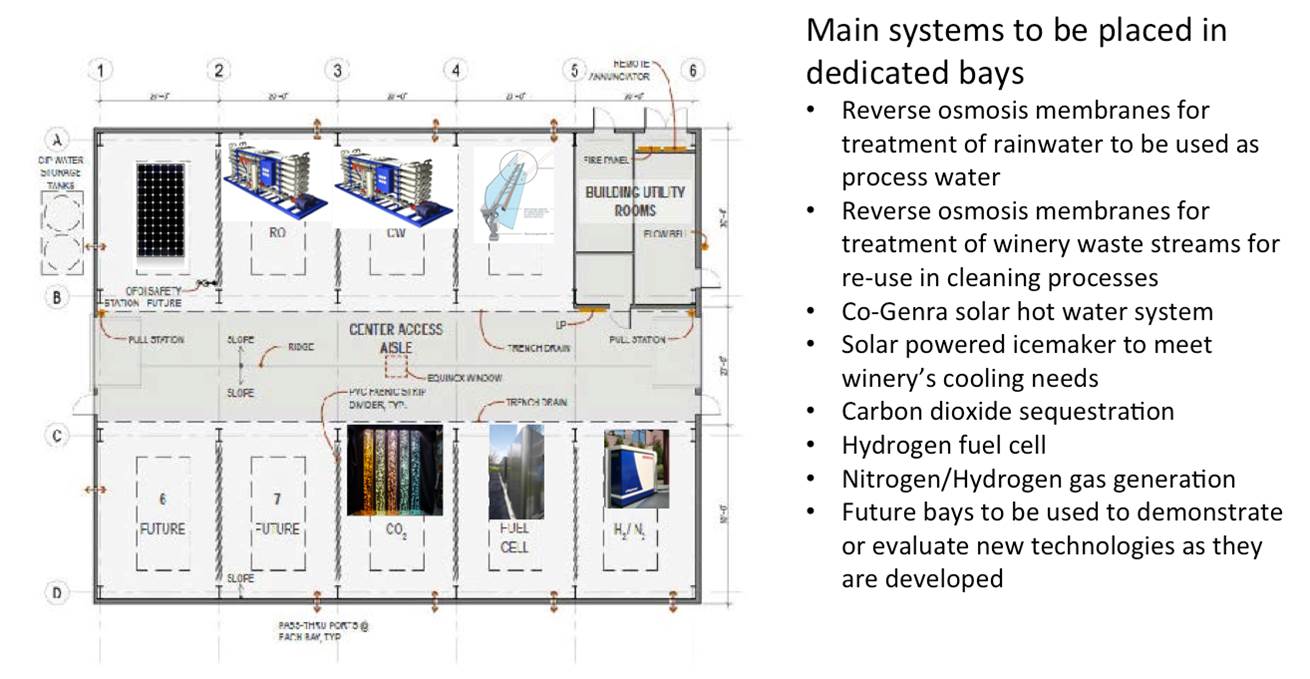
In May 2013, the Department of Viticulture and Enology opened the 8500 square-foot Jess S. Jackson Sustainable Winery Building. When fully equipped, it will enable the winery to become the first self-sustainable, zero-carbon teaching and research facility in the world. The $4 million building was made possible by a $3 million pledge from the late Jess Jackson and his wife, Barbara Banke, co-founder and proprietor of Jackson Family Wines. “My family and I are committed to the advancement of sustainable winemaking and sustainable agriculture,” says Banke. No conventional heating or air conditioning were installed in the building to minimize the energy required to run this facility. The Jackson Sustainable Winery Building is designed to never drop below 50°F (10°C) or above 80°F (27°C ) even during the hot summers found in Davis. Temperature is controlled by efficient night air cooling in summer and warm day heating in winter. Windows near the peak of the slanted ceiling open automatically at night during the summer to allow natural circulation of the air through a fan that introduces the cool nighttime air near the floor. Hot or cold water can be circulated to heat or cool the floor slab of the building via tubes within the slab.
The building contains 10 modular spaces that will house equipment for various processes that support the winery operations including high-purity filtration of rainwater that can be used for cleaning; 90 percent of the water and chemicals from each winery cleaning cycle will be captured and processed for future use in the complex, eventually being used as many as 10 times. In addition, the equipment in one of the modules will sequester the carbon dioxide captured from all fermentations in the winery and convert it into calcium carbonate. The building also will produce chilled water using an icemaker powered by electricity from solar panels and will be equipped to generate hydrogen gas by electrolysis and produce nighttime energy using a hydrogen fuel cell. “The building is designed so that each of these systems can be removed and replaced with a newer model, making it an evolving test-bed and demonstration site,” said Professor Roger Boulton, the visionary behind the building.

